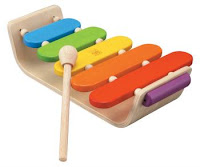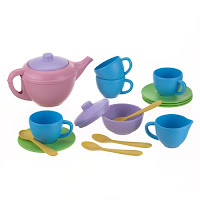Screen-Free Week starts this Monday, April 18
th, and lasts until Sunday, April 24
th. Previously called TV-Turnoff Week, Screen Free Week is a chance to unplug your family – and yourself – from TV, video games, computers and ubiquitous mobile devices.
ASTRA, The American Specialty Toy Retailering Association, of which Grandrabbit’s is proud to be a member, is one of a host of official endorsers for Screen-Free Week. By turning off the screens and turning on real life, this week can provide time for your children – and yourself - to play, connect with nature, read, daydream, create explore and spend more time with family and friends.
There is a growing consensus among health professionals, educators, and parents all this time hooked in to our media-saturated environment has detrimental effects on a child’s wellbeing. As compiled by the
Campaign for a Commercial Free Childhood, the facts are sobering:
- School-age children spend nearly twice as many hours with screen media such as television, video games, computers, and hand-held devices as they do in school.
- Television use is at an all-time high among preschoolers—according to Nielsen, young children spend, on average, more than 24 hours a week watching TV.
- Screen time is habituating and linked to poor school performance, childhood obesity, poor sleep habits and attention problems.
- Forty percent of 3-month-old infants are regular viewers of television and DVDs—even though the American Academy of Pediatrics recommends no screen time for children under two.
Perhaps one side effect often overlooked in the myriad of problems over-exposure can cause – such as attention deficit disorders, declining physical health, and addictive behaviors – is the fact that all these devices cut into one of the most valuable experiences of being a kid: playtime.
A recent article in The New York Times laid out the growing movement to restore playtime in children’s lives. As the article explains, playtime isn’t just silly time – it teaches valuable socialization and thinking skills:
Too little playtime may seem to rank far down on the list of society’s worries, but the scientists, psychologists, educators and others who are part of the play movement say that most of the social and intellectual skills one needs to succeed in life and work are first developed through childhood play. Children learn to control their impulses through games like Simon Says, play advocates believe, and they learn to solve problems, negotiate, think creatively and work as a team when they dig together in a sandbox or build a fort with sofa cushions. (The experts define play as a game or activity initiated and directed by children. So video games don’t count, they say, except perhaps ones that involve creating something, and neither, really, do the many educational toys that do things like sing the A B C’s with the push of a button.)
Also, think of your own life. Think of how much time seems to slip away while we’re checking our smartphones at the dinner table or surfing through videos on youtube. This isn’t just a week to encourage kids to get away from the screen – this is a time for adults too!
Still, the thought of unplugging completely may seem daunting. So for Screen-Free Week, one strategy could be to set small goals, like cutting TV viewing down to an hour daily or keeping computer time for school work only. You could even focus on a specific device (no video games for a week) or a particularly addictive aspect of a device (c’mon, do you think you really couldn’t live for a week without knowing what your Facebook friends ate for dinner and “liking” that “Mary Smith ate some awesome roast beef lol”? I bet you could!). Or just simply try to fill the week with family activities – you may find you have less time for the screen than you thought.
Here’s a list of 15 suggestions for activities for your family during Screen-Free Week. Feel free to add more ideas in our comment section!
1. Play outside! Go for a hike, fly a kite, or go play a game of Frisbee in the park.
2. Visit a museum – science museums especially have lots of cool stuff for kids.
3. Invite a bunch of friends over for a cookie or pizza baking party.
4. Participate in a volunteer activity your family will find rewarding.
5. Explore your neighborhood on bikes, skateboards or scooters.
6. Have a picnic – if it’s raining, you could even have one indoors.
7. Have a family game or puzzle night.
8. Work on art projects together.
9. Have story time. You could read a book, or make up a story.
10. Have an indoor dance party. It could be a great time to find out what music your kids dig, and maybe even teach them about the music you like too!
11. Build a fort out of sofa cushions, blankets or whatever you can find around the house. If you’re really ambitious, you could make a whole obstacle course.
12. Have pretend time. This could be a great time to play dress up and create new stories about your kids’ favorite characters.
13. Organize a scavenger hunt.
14. Play a classic game like Tag, Hide and Seek, Red light/Green light, Simon Says or Duck Duck Goose.
15.
Celebrate a random holiday! Every day of the year has an interesting, historic and sometimes downright silly, holiday associated with it.
This website has a great list of holidays to choose from.
Stay tuned to The Hop Spot for a roundup of some of our favorite links and articles we’ve found about the movement to unplug. Remember, it’s not just about one week. We hope Screen-Free Week can help kick start positive changes for the rest of the year!



























